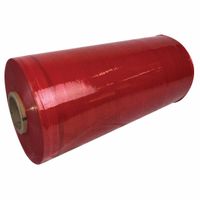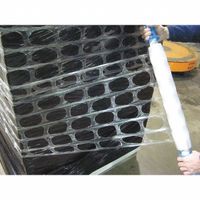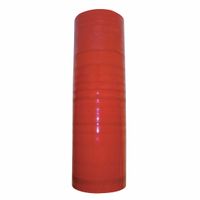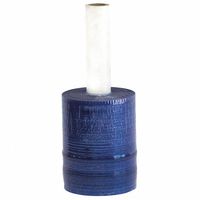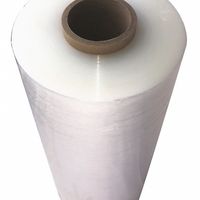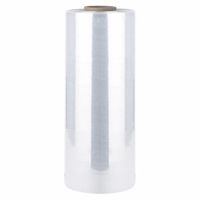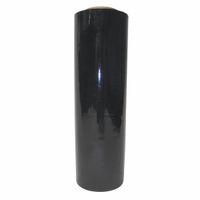Call +(254) 703 030 000 / 751 483 999 / 721 704 777
- Home
- Packaging Shipping
- Stretch Wrap
- Stretch Wrap Rolls
.....Read More
Frequently Asked Questions
What is the difference between general purpose and high-performance stretch wrap?
General purpose stretch wrap and high-performance stretch wrap differ primarily in their intended applications, material composition, and performance characteristics.
General Purpose Stretch Wrap:
1. **Material Composition**: Typically made from polyethylene, it is designed for everyday use and is suitable for light to medium-duty applications.
2. **Thickness and Strength**: Generally thinner and less robust, with a thickness ranging from 50 to 80 gauge. It offers adequate strength for securing lighter loads.
3. **Stretchability**: Offers moderate stretchability, usually around 100-150%, which is sufficient for standard packaging needs.
4. **Cost**: More economical, making it a cost-effective choice for businesses with less demanding packaging requirements.
5. **Applications**: Ideal for wrapping pallets with uniform shapes and lighter products, such as boxes or small items.
High-Performance Stretch Wrap:
1. **Material Composition**: Often made from advanced resins and engineered films, providing superior strength and durability.
2. **Thickness and Strength**: Thicker and stronger, with a thickness often exceeding 80 gauge. It is designed to handle heavy-duty applications and irregular loads.
3. **Stretchability**: Offers higher stretchability, often exceeding 200%, allowing for better load containment and reduced film usage.
4. **Cost**: More expensive due to its enhanced properties, but can be cost-effective in the long run by reducing film waste and improving load stability.
5. **Applications**: Suitable for securing heavy, irregular, or high-value loads, such as industrial equipment or products requiring extra protection during transit.
In summary, general purpose stretch wrap is suitable for standard, less demanding applications, while high-performance stretch wrap is designed for challenging packaging needs, offering greater strength, stretchability, and load stability.
How do you apply stretch wrap by hand?
To apply stretch wrap by hand, follow these steps:
1. **Preparation**: Ensure the item or pallet is stable and the surface is clean. Choose the appropriate stretch wrap roll based on the size and weight of the load.
2. **Positioning**: Place the stretch wrap roll at the base of the item or pallet. Hold the roll in one hand and the film's leading edge in the other.
3. **Securing the Film**: Tuck the film's leading edge under a corner or edge of the load to anchor it. This prevents the film from slipping as you begin wrapping.
4. **Initial Wrap**: Walk around the load, keeping the film taut. Wrap the base two to three times to secure the film. Ensure each layer overlaps the previous one by about 50% for stability.
5. **Vertical Wrapping**: After securing the base, start moving upward. Maintain tension on the film to ensure a snug fit. Overlap each layer by 50% as you ascend.
6. **Top Wrapping**: Once you reach the top, wrap it two to three times to secure the upper layers. This helps prevent the load from shifting during transport.
7. **Descending Wrap**: If necessary, descend back down to the base, maintaining tension and overlap. This adds extra stability, especially for taller loads.
8. **Securing the End**: Once the load is fully wrapped, cut the film from the roll. Tuck the end under a previous layer or press it against the film to adhere.
9. **Inspection**: Check for any loose areas or gaps. Re-wrap if necessary to ensure the load is secure.
10. **Safety**: Use a hand-held dispenser if available to reduce strain and improve efficiency. Always be cautious of sharp edges and corners to avoid tearing the film.
What are the benefits of using product-concealing stretch wrap?
Product-concealing stretch wrap offers several benefits:
1. **Security and Theft Prevention**: By concealing the contents of a pallet or shipment, this wrap reduces the risk of theft during transportation and storage. Potential thieves are less likely to target packages when they cannot see the contents.
2. **Privacy and Confidentiality**: For businesses dealing with sensitive or high-value items, product-concealing stretch wrap ensures that the contents remain confidential, protecting trade secrets and proprietary products from prying eyes.
3. **Protection from UV Rays**: Many product-concealing wraps are designed to block harmful UV rays, which can degrade certain products over time. This is particularly beneficial for items sensitive to light exposure.
4. **Dust and Moisture Resistance**: The wrap acts as a barrier against dust, dirt, and moisture, maintaining the integrity and cleanliness of the products during storage and transit.
5. **Improved Aesthetics**: Concealing the products can provide a uniform and professional appearance, which is particularly useful in retail environments or when presenting products to clients.
6. **Reduced Tampering**: With the contents hidden, it becomes more challenging for unauthorized individuals to tamper with the products without being noticed, enhancing the overall security of the shipment.
7. **Versatility**: Product-concealing stretch wrap can be used for a wide range of products, from electronics to food items, making it a versatile solution for various industries.
8. **Cost-Effective**: By reducing theft, damage, and the need for additional protective packaging, this type of wrap can lead to cost savings in the long run.
9. **Branding Opportunities**: Some wraps can be customized with logos or branding, providing an additional marketing channel while maintaining product confidentiality.
10. **Ease of Use**: Like traditional stretch wrap, product-concealing wrap is easy to apply and remove, streamlining packaging processes without requiring specialized equipment.
How does antistatic stretch wrap protect electronics?
Antistatic stretch wrap protects electronics by preventing the buildup and discharge of static electricity, which can damage sensitive electronic components. This specialized wrap is made from materials that have been treated to reduce their surface resistivity, allowing static charges to dissipate safely.
When electronic devices are packaged, they can generate static electricity through friction, especially during handling and transportation. If this static charge is not controlled, it can discharge suddenly, potentially causing electrostatic discharge (ESD) that can damage or destroy electronic circuits and components. Antistatic stretch wrap mitigates this risk by providing a conductive path for static charges to flow harmlessly away from the electronics.
The wrap is typically pink or clear, indicating its antistatic properties, and is designed to be used in environments where static control is crucial. It is often used in conjunction with other ESD protective materials, such as antistatic bags and foam, to create a comprehensive protective packaging solution.
Additionally, antistatic stretch wrap offers the same benefits as regular stretch wrap, such as securing items together, protecting against dust and moisture, and providing a barrier against physical damage. By combining these protective features with antistatic properties, the wrap ensures that electronic components remain safe from both physical and electrostatic harm during storage and transit.
What is the purpose of color coding and printed message wrap?
The purpose of color coding and printed message wrap is to enhance communication, organization, and safety across various applications.
Color coding is a visual system that uses different colors to categorize, prioritize, or differentiate items, information, or processes. It helps in quickly identifying and understanding the status, type, or importance of an item. For instance, in industrial settings, color coding is used to distinguish between different types of pipes, cables, or machinery, reducing the risk of errors and accidents. In healthcare, it aids in identifying patient information, medication types, or urgency levels, ensuring efficient and accurate care. In workplaces, color-coded files or labels streamline organization and retrieval processes, boosting productivity.
Printed message wrap, on the other hand, involves wrapping items with printed messages or instructions. This method is often used in packaging, logistics, and retail to convey important information such as handling instructions, safety warnings, or promotional messages. It ensures that critical information is visible and accessible, reducing the likelihood of mishandling or miscommunication. In marketing, printed message wraps can enhance brand visibility and customer engagement by providing product details, usage instructions, or promotional offers directly on the packaging.
Together, color coding and printed message wrap serve to improve clarity, efficiency, and safety by providing immediate visual cues and essential information. They are integral in environments where quick decision-making and accurate information dissemination are crucial, such as in manufacturing, healthcare, logistics, and retail.
How does breathable stretch wrap differ from regular stretch wrap?
Breathable stretch wrap differs from regular stretch wrap primarily in its ability to allow air circulation while still providing secure packaging. This is achieved through the use of specialized materials or designs, such as perforations or mesh-like structures, which enable air and moisture to pass through. This feature is particularly beneficial for products that require ventilation, such as fresh produce, plants, or items that emit moisture or gases.
Regular stretch wrap, on the other hand, is typically made from polyethylene and is designed to tightly seal and protect products from dust, dirt, and moisture. It is non-permeable, meaning it does not allow air or moisture to pass through, which can be advantageous for products that need to be shielded from external elements.
The key differences include:
1. **Material Composition**: Breathable stretch wrap often incorporates materials or designs that facilitate airflow, whereas regular stretch wrap is made from solid, non-permeable plastic.
2. **Functionality**: Breathable wrap is ideal for products that need to "breathe," preventing condensation and spoilage. Regular wrap is used for products that require protection from environmental factors.
3. **Applications**: Breathable wrap is commonly used in the agricultural and food industries, while regular wrap is used across various sectors for general packaging needs.
4. **Cost**: Breathable stretch wrap can be more expensive due to its specialized design and materials.
5. **Environmental Impact**: Some breathable wraps are designed to be more environmentally friendly, using biodegradable materials, whereas regular wraps are often less sustainable.
In summary, the choice between breathable and regular stretch wrap depends on the specific needs of the product being packaged, balancing protection with the necessity for ventilation.
What are the common uses of stretch wrap in shipping and storage?
Stretch wrap is commonly used in shipping and storage for several purposes:
1. **Load Stabilization**: Stretch wrap secures items on pallets, preventing them from shifting during transit. This reduces the risk of damage and ensures that the load remains intact.
2. **Protection from Dust and Moisture**: It acts as a barrier against dust, dirt, and moisture, protecting goods from environmental elements that could cause damage or contamination.
3. **Cost-Effective Packaging**: Stretch wrap is a cost-efficient packaging solution compared to other methods like strapping or shrink wrapping. It requires minimal equipment and is easy to apply.
4. **Tamper Evidence**: Stretch wrap can provide a level of tamper evidence. If the wrap is disturbed or cut, it is immediately noticeable, which helps in maintaining the integrity of the shipment.
5. **Versatility**: It can be used for a wide range of products, from small boxes to large machinery, making it a versatile option for various industries.
6. **Improved Inventory Control**: By keeping items together, stretch wrap helps in organizing and managing inventory more effectively, reducing the chances of loss or misplacement.
7. **Enhanced Safety**: By securing loads, stretch wrap minimizes the risk of accidents caused by falling items, ensuring safer handling and transportation.
8. **Space Efficiency**: Stretch wrap allows for tighter packing of goods, optimizing space in storage and during transportation, which can lead to cost savings.
9. **Recyclability**: Many types of stretch wrap are recyclable, making it an environmentally friendly option for businesses looking to reduce their carbon footprint.
10. **Customizable**: Available in various thicknesses and strengths, stretch wrap can be tailored to meet specific needs, providing the right level of protection for different types of goods.
